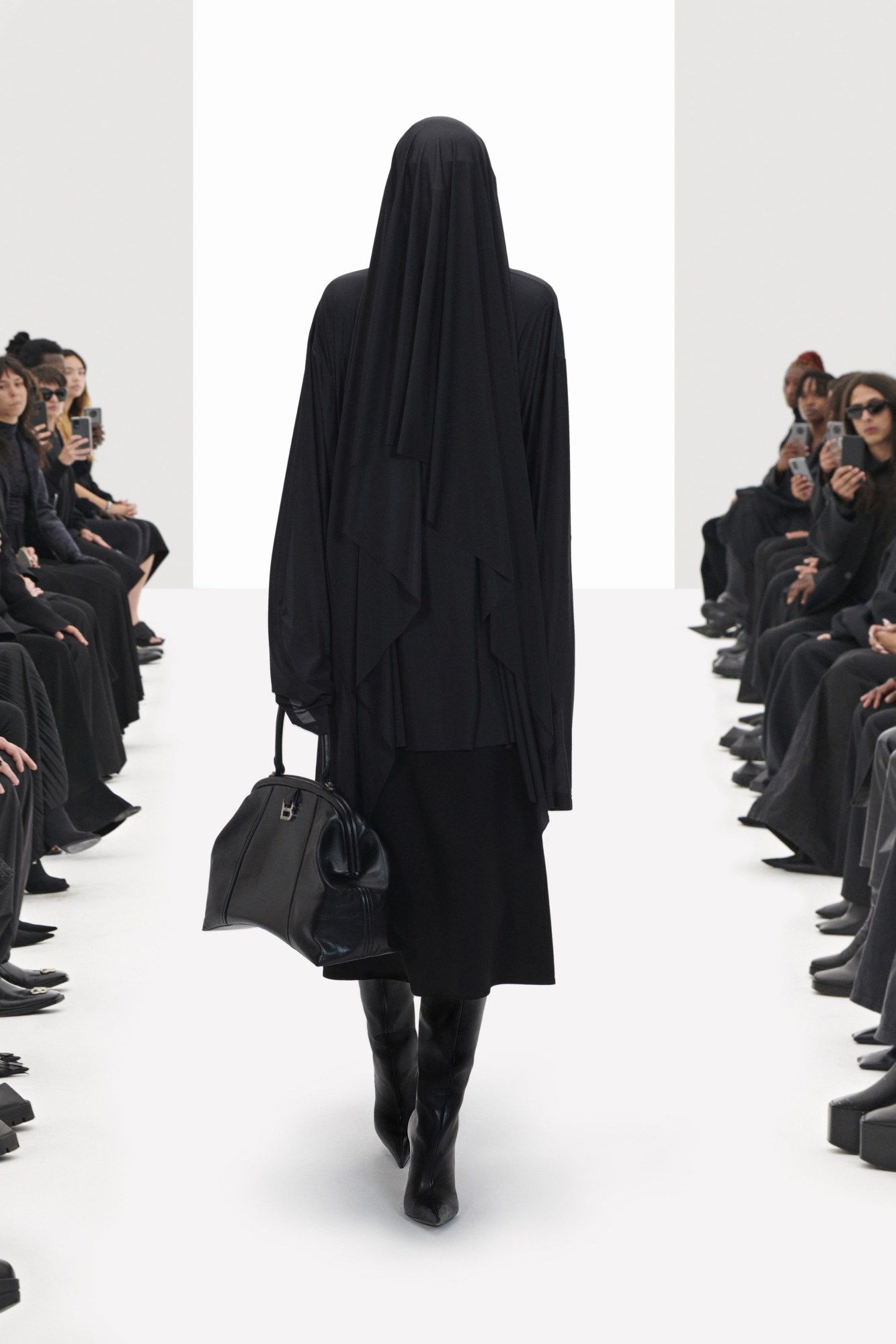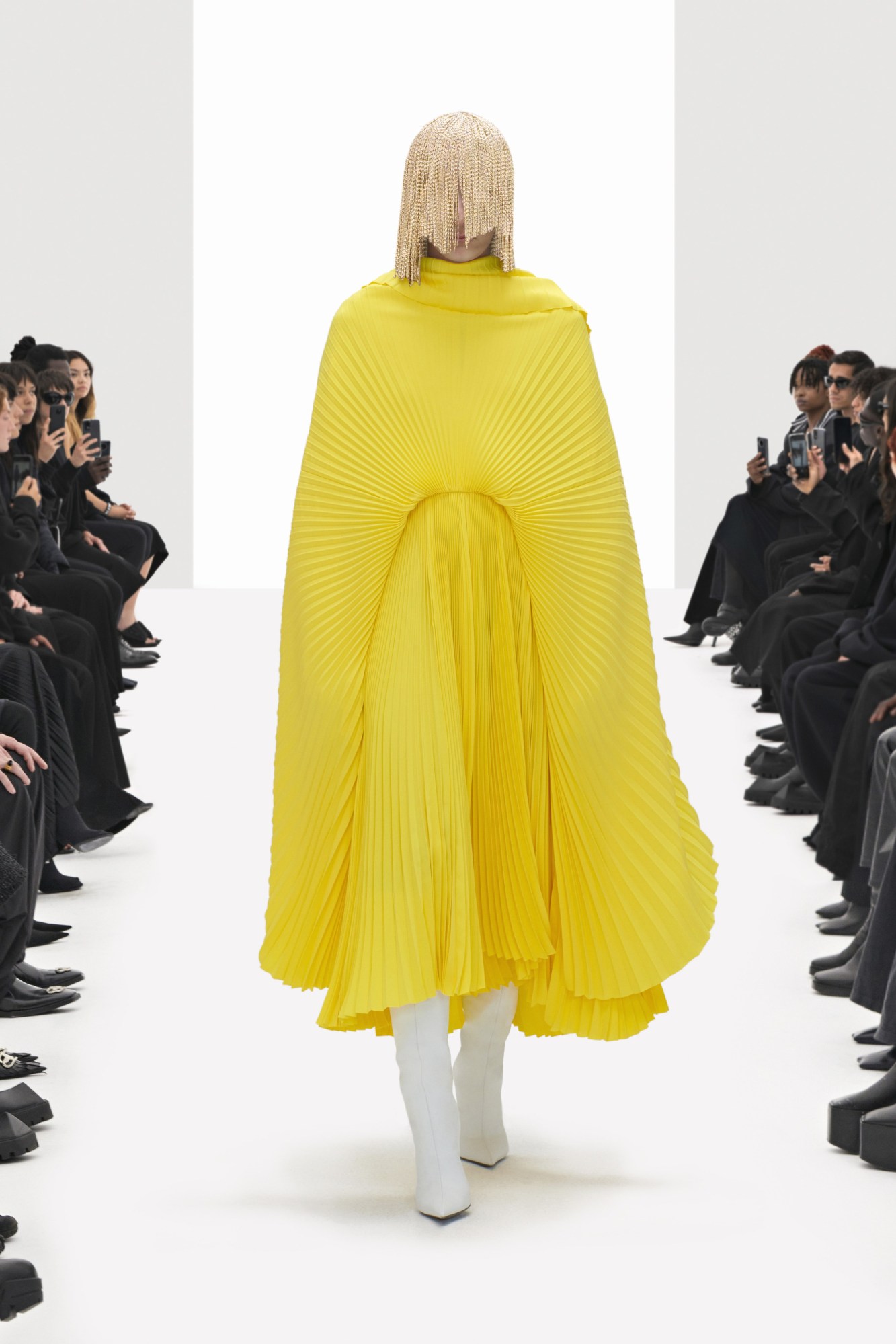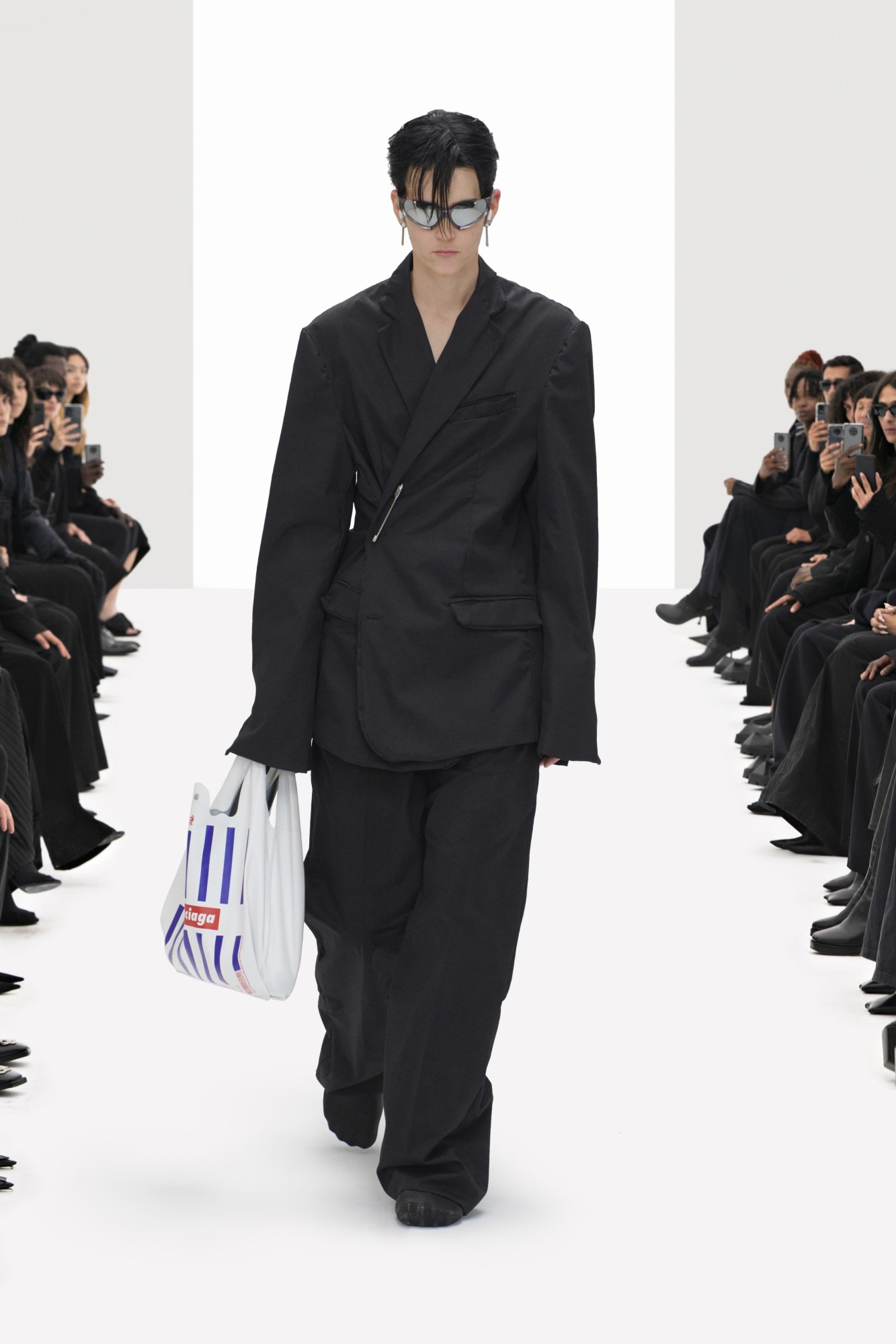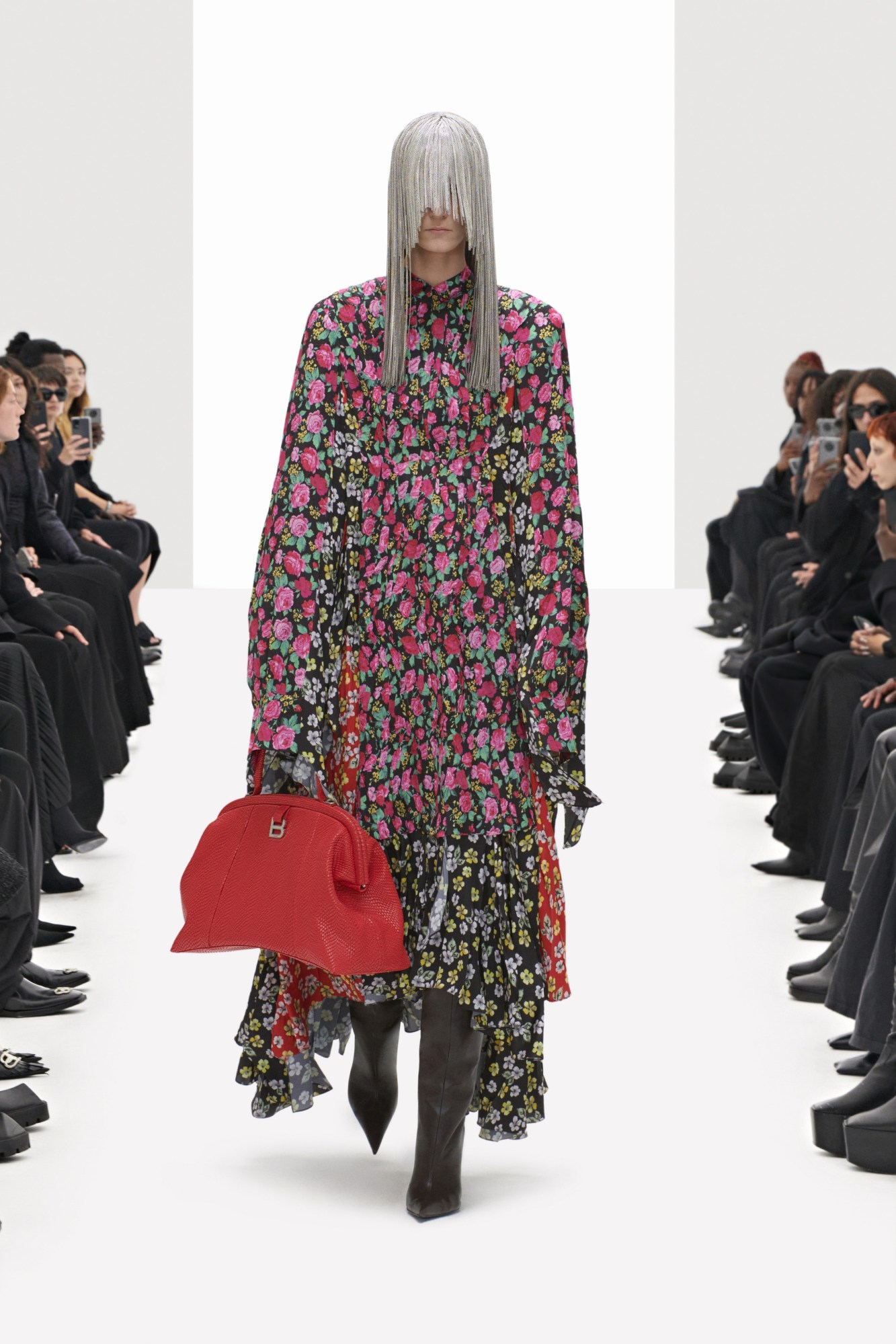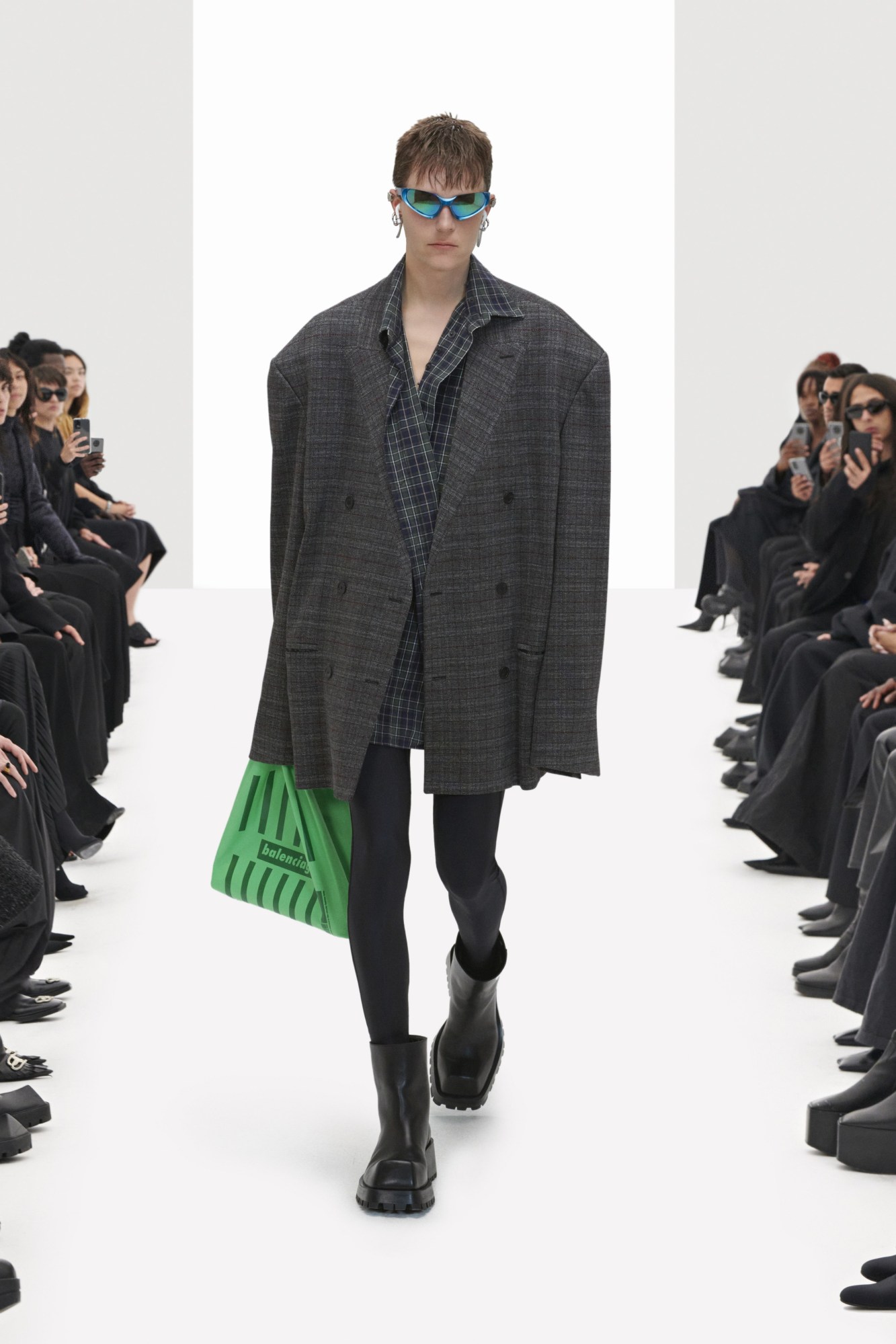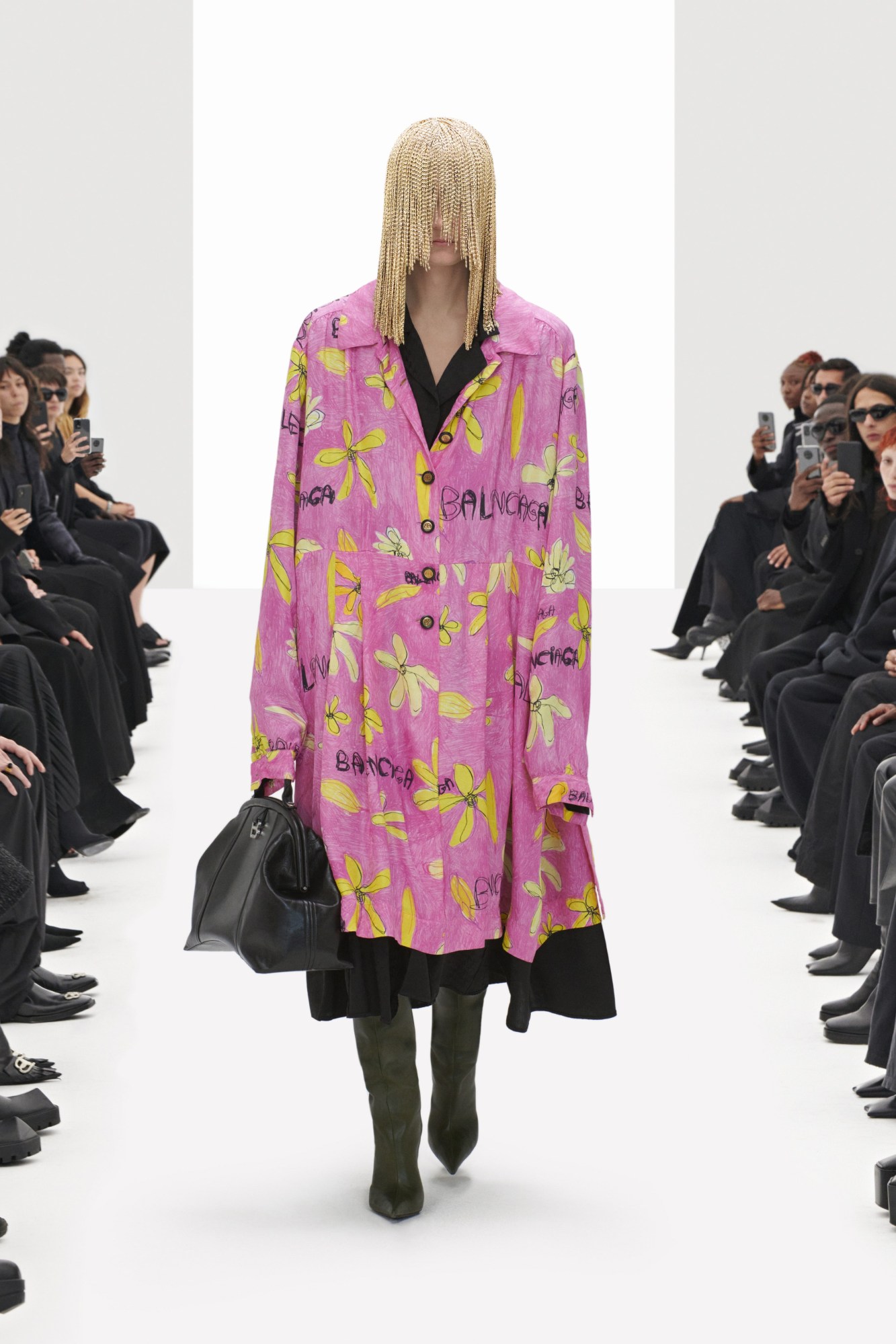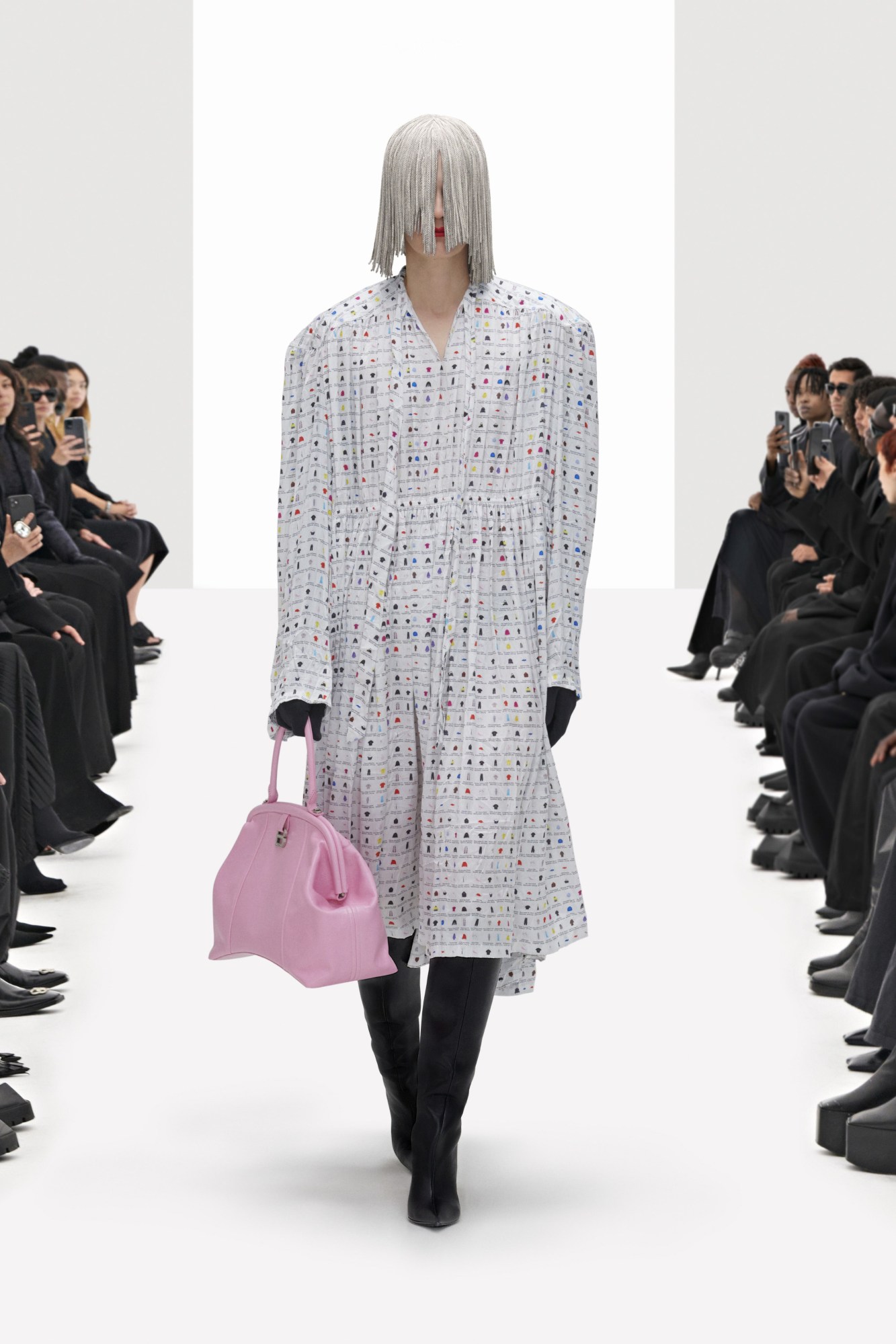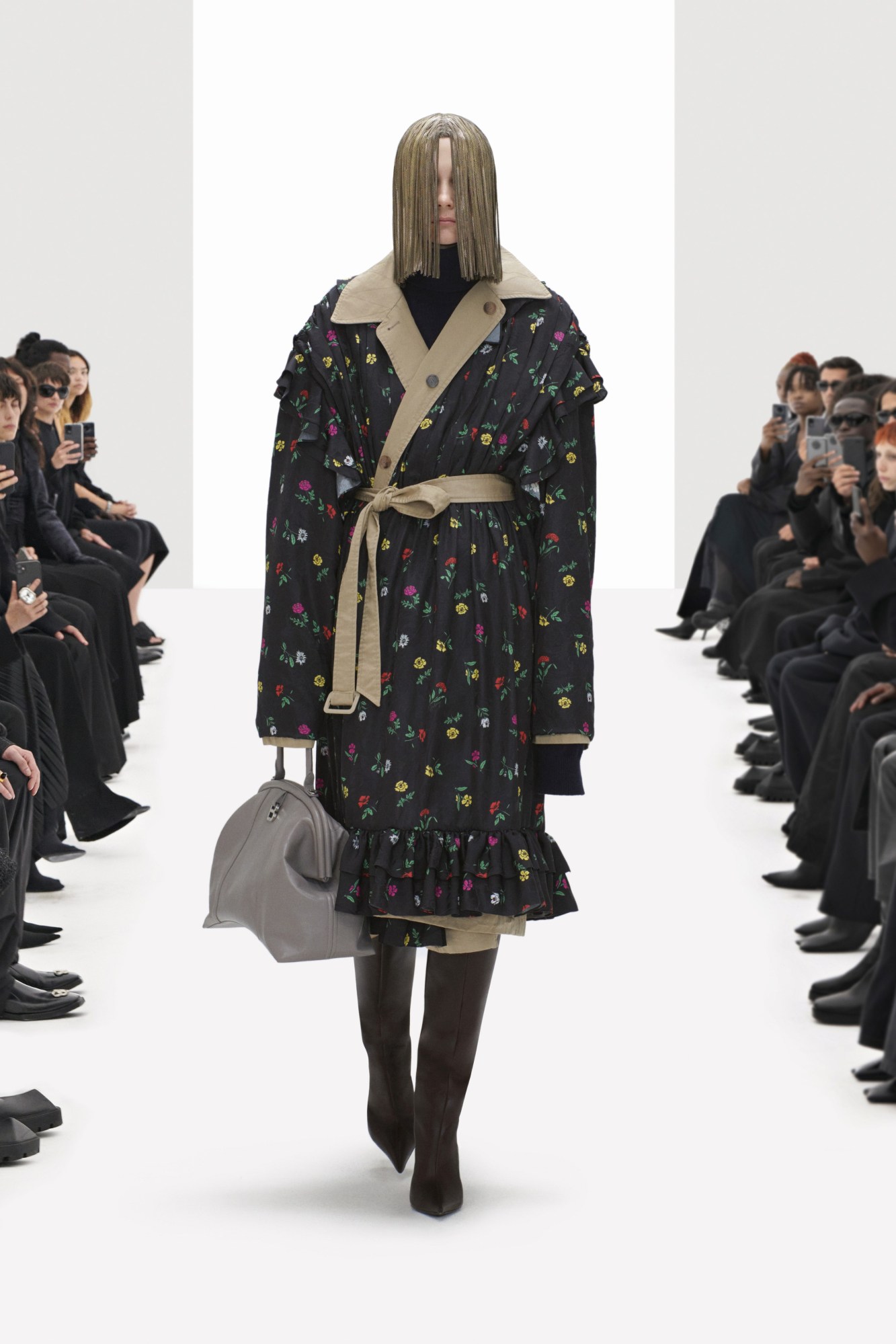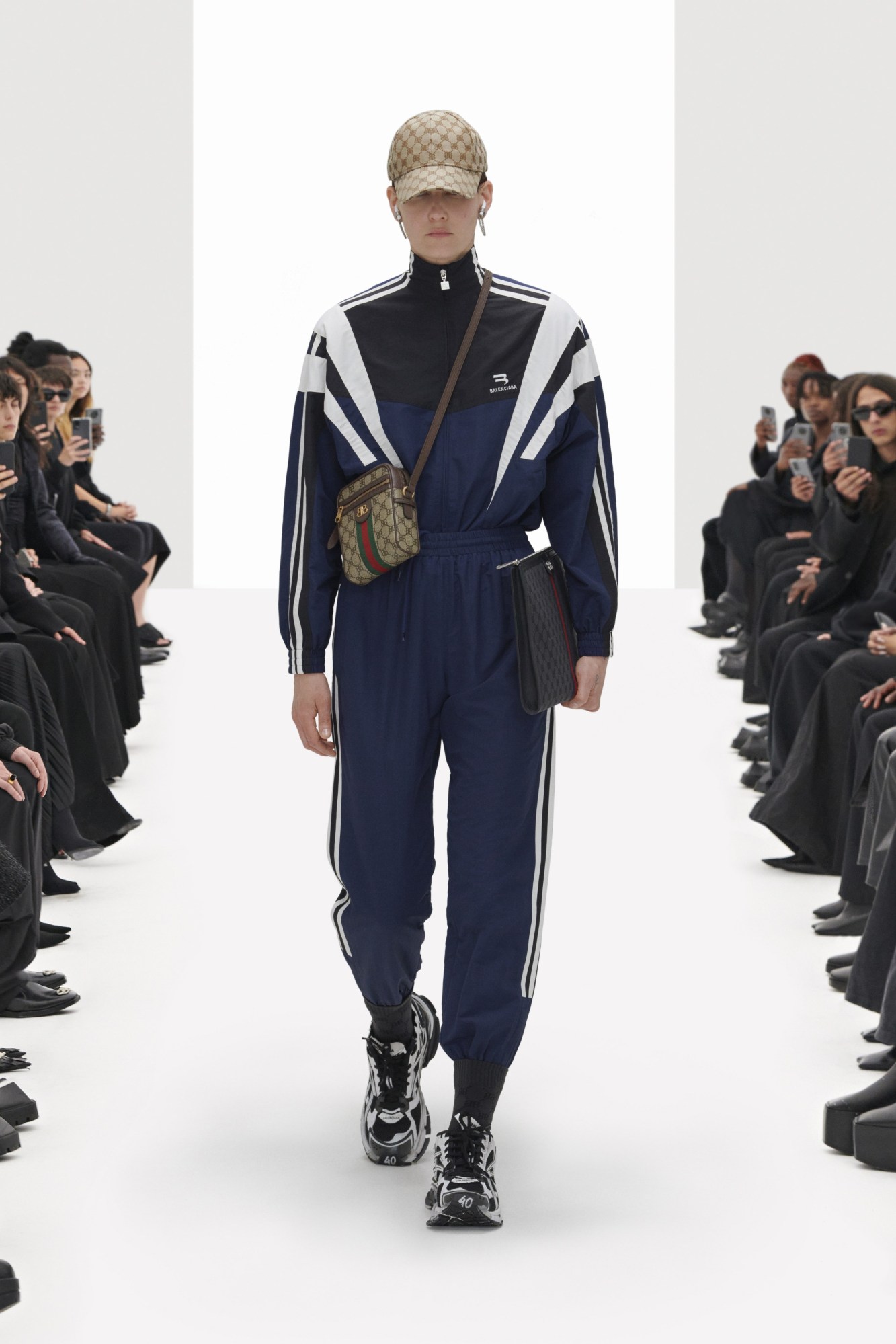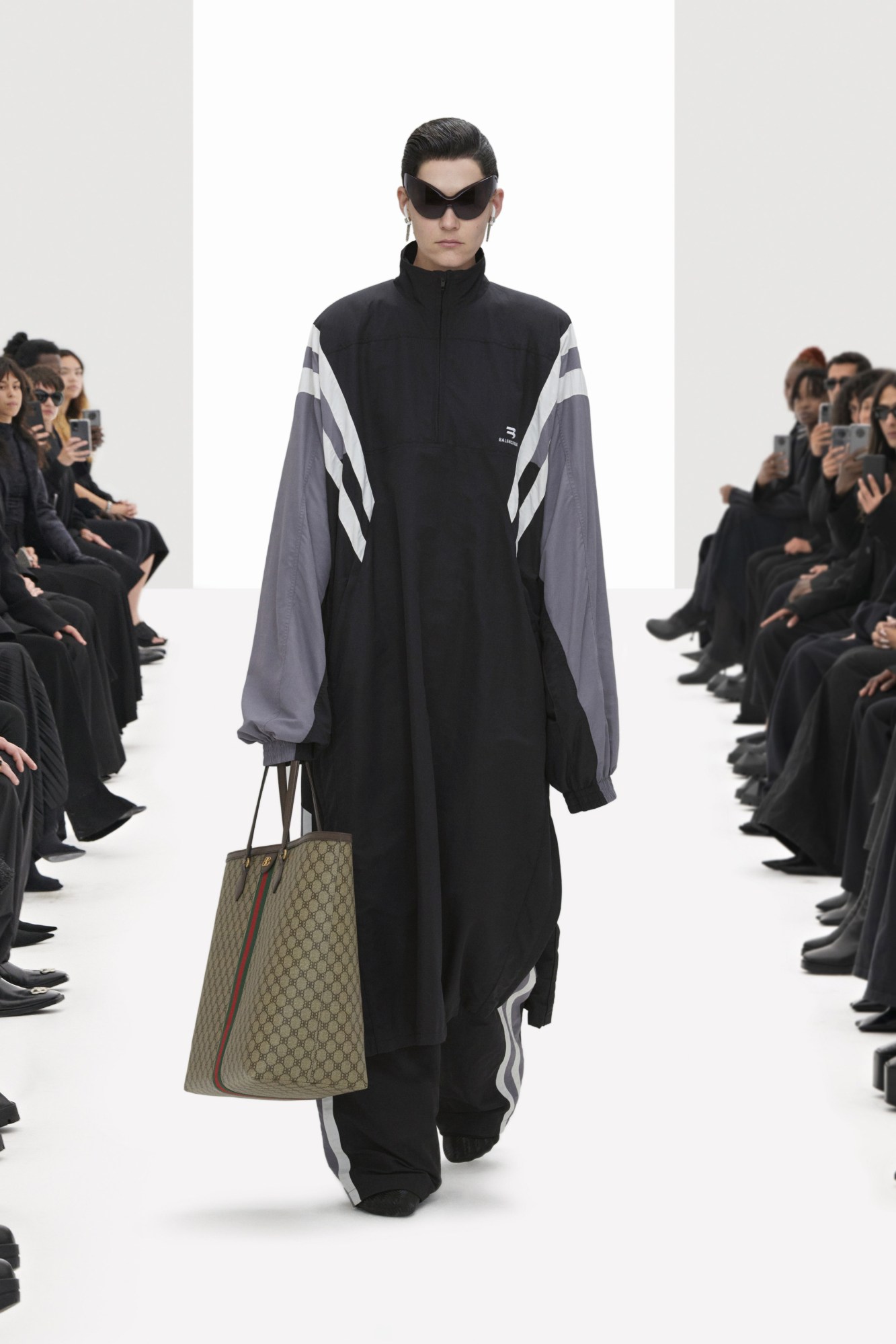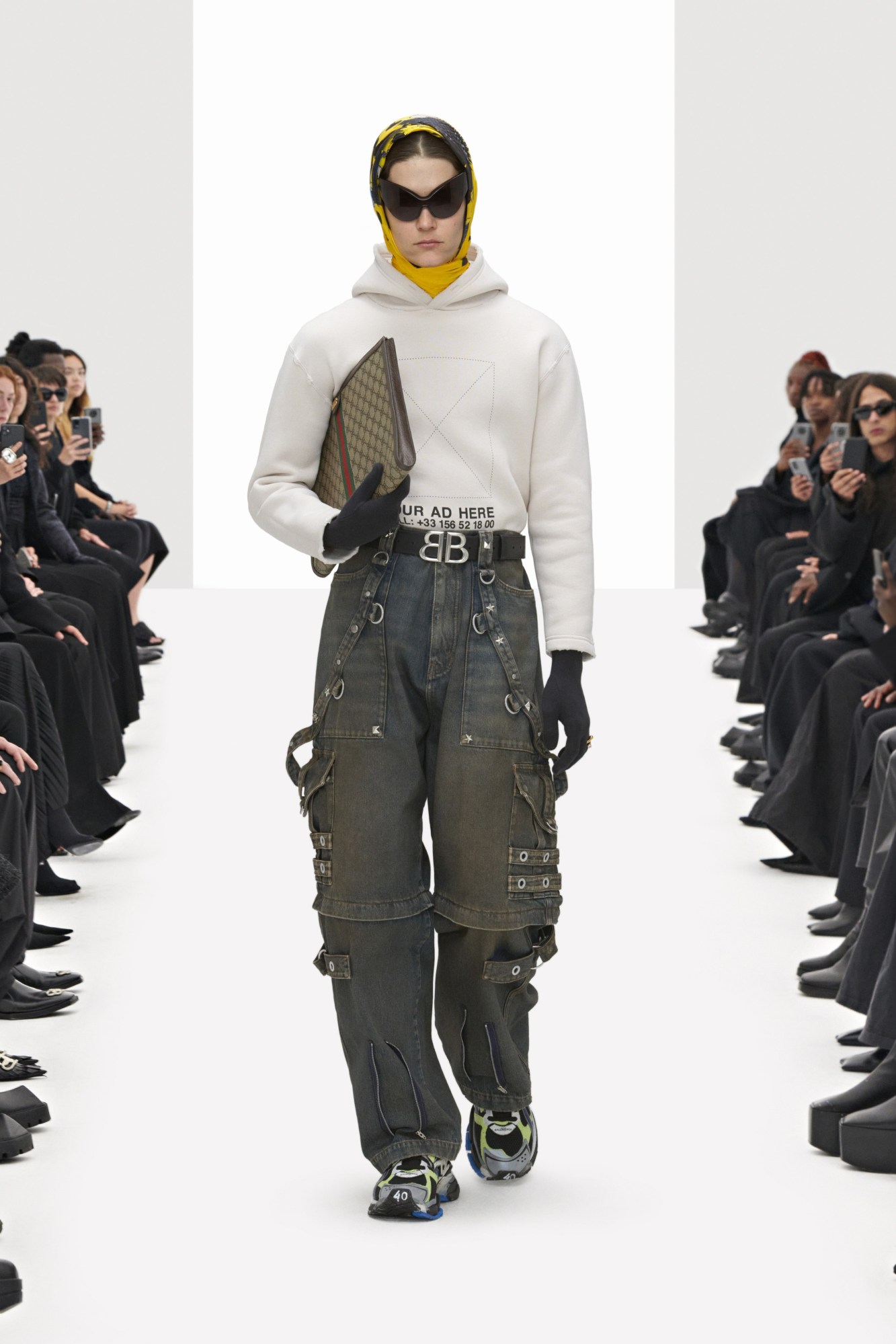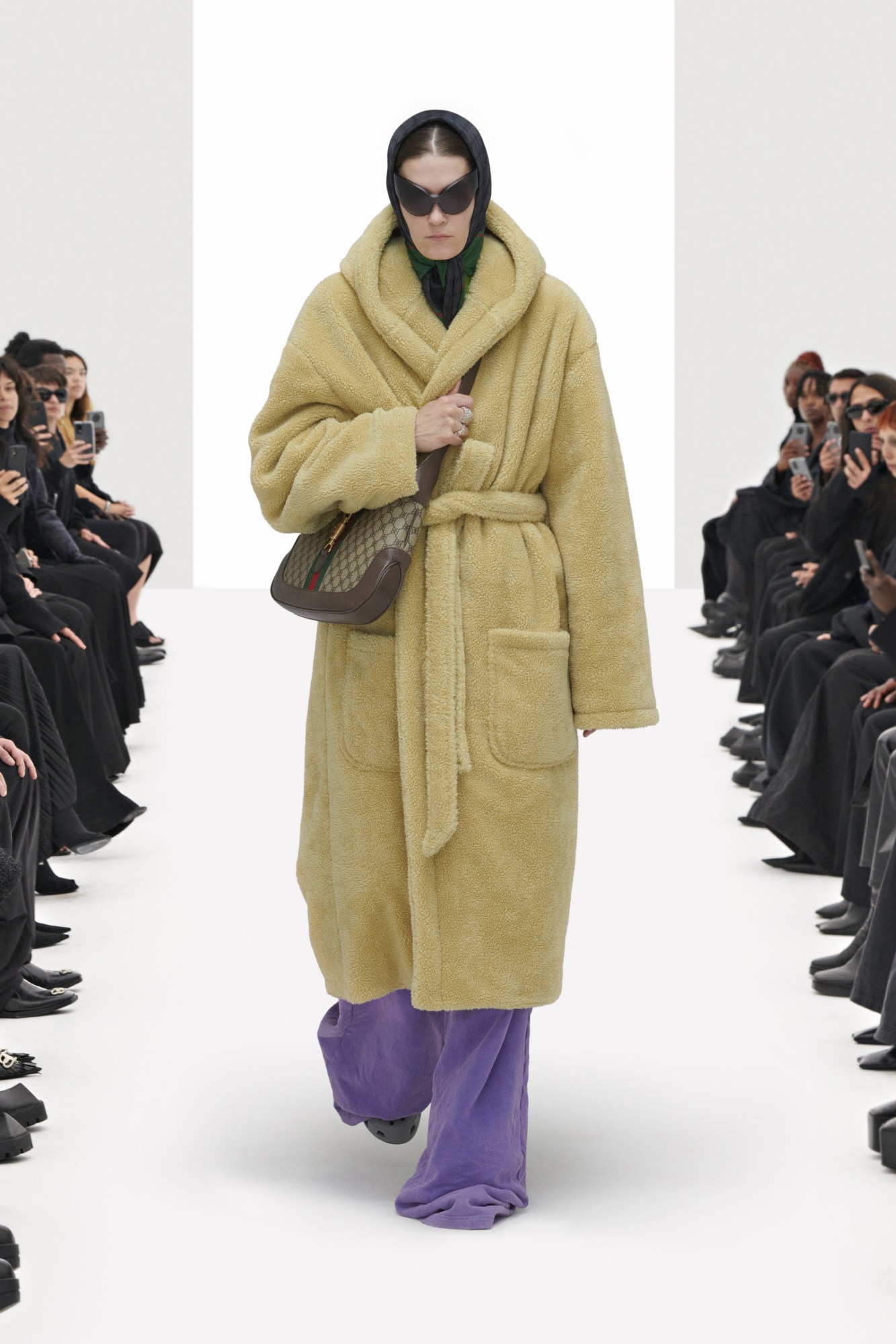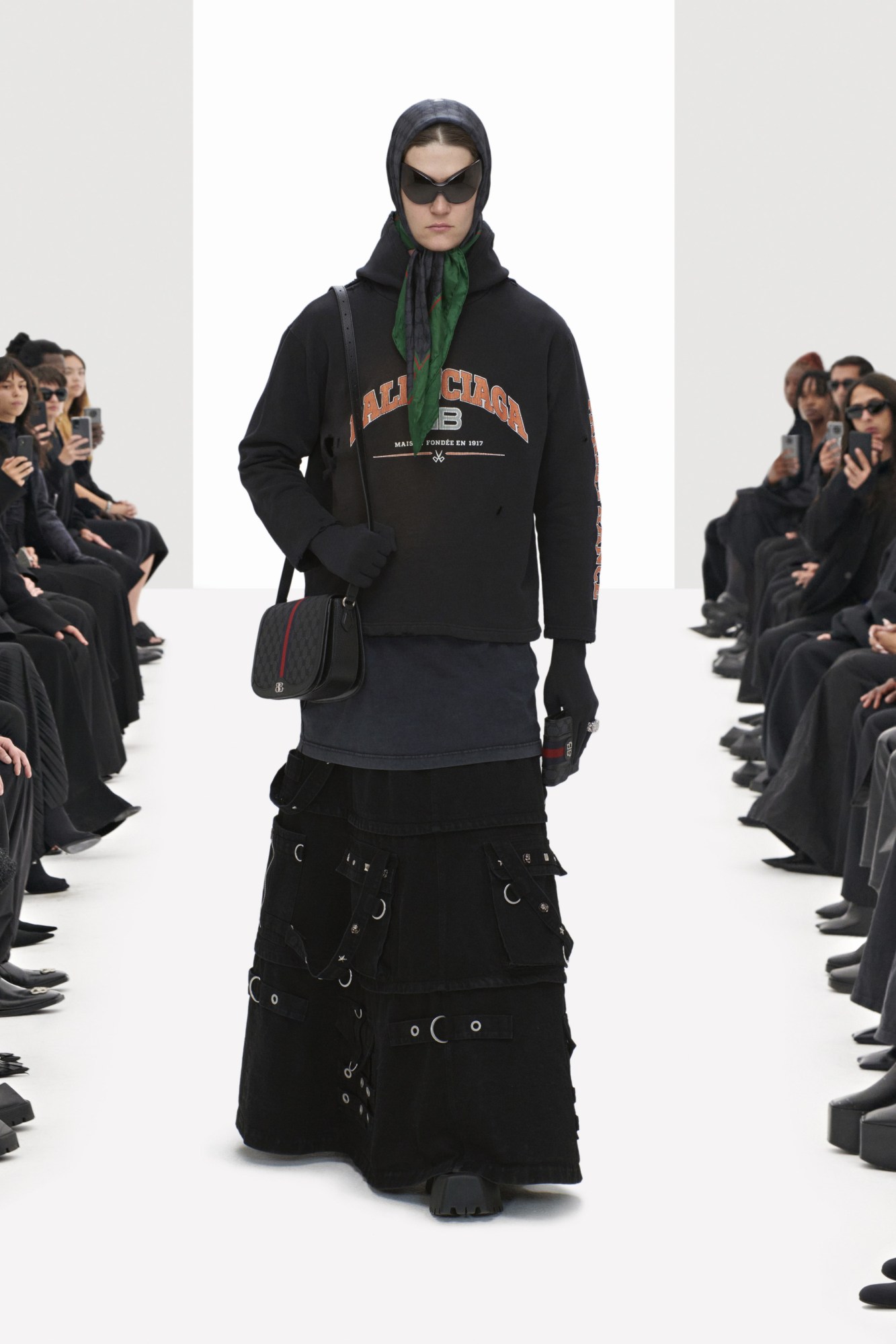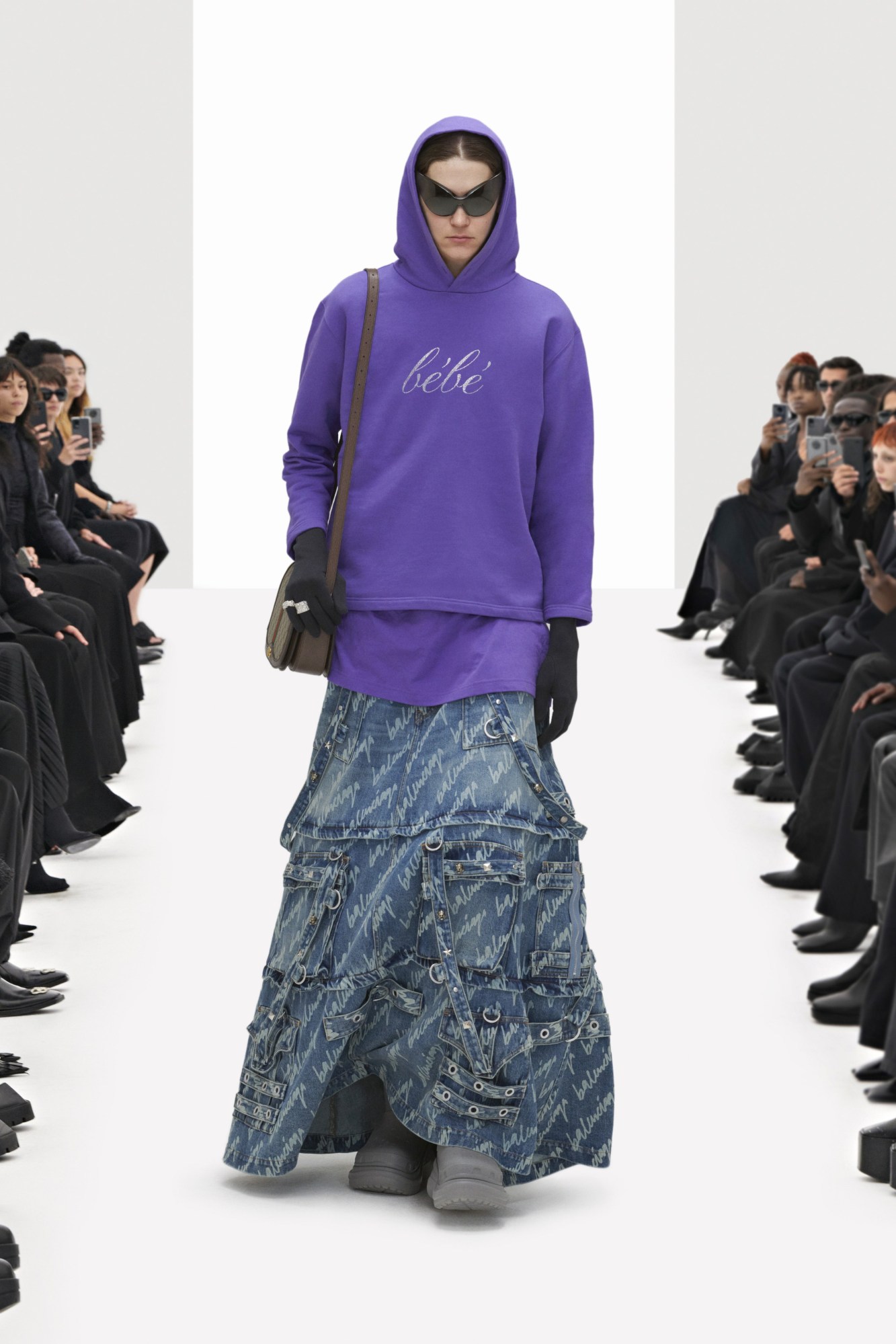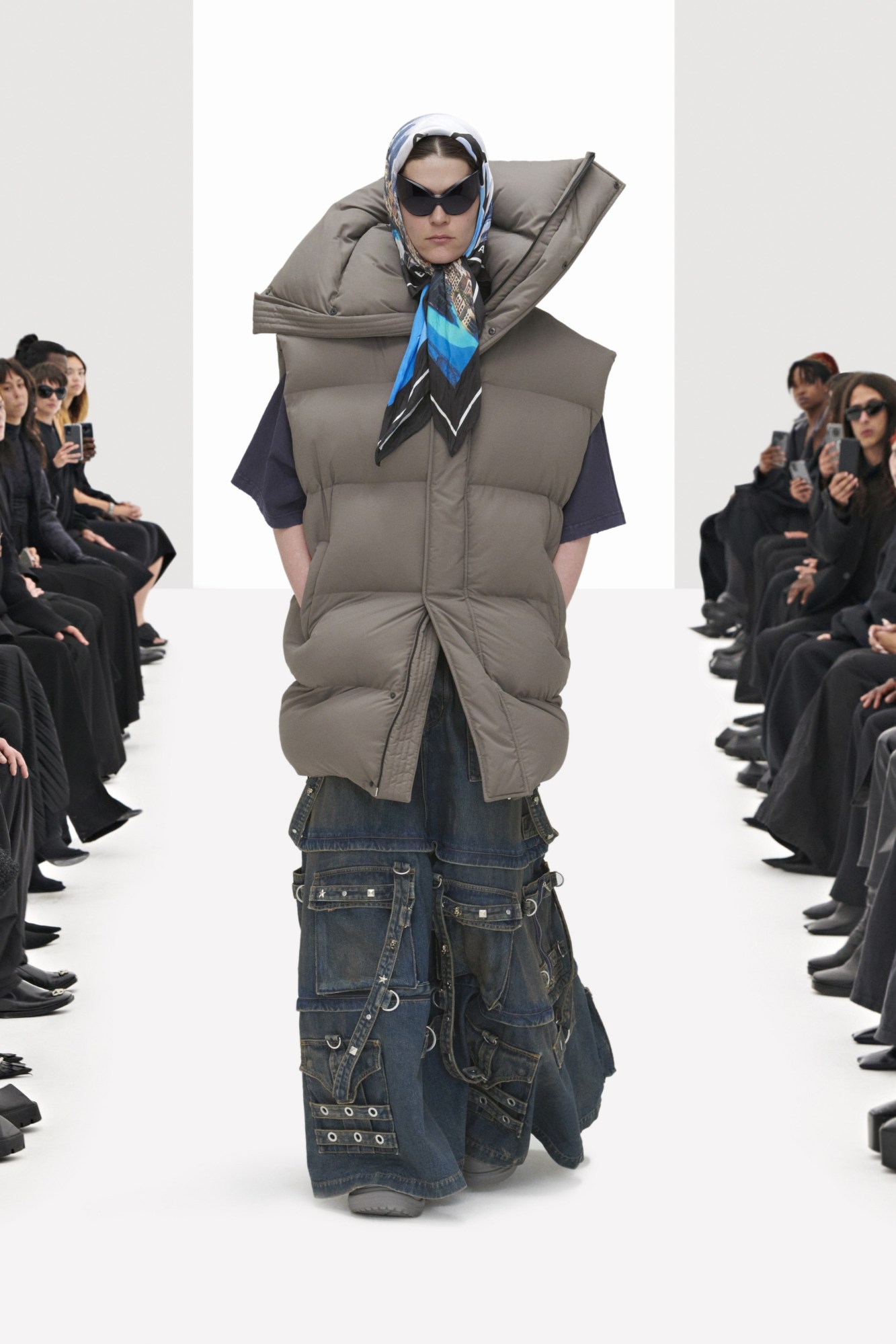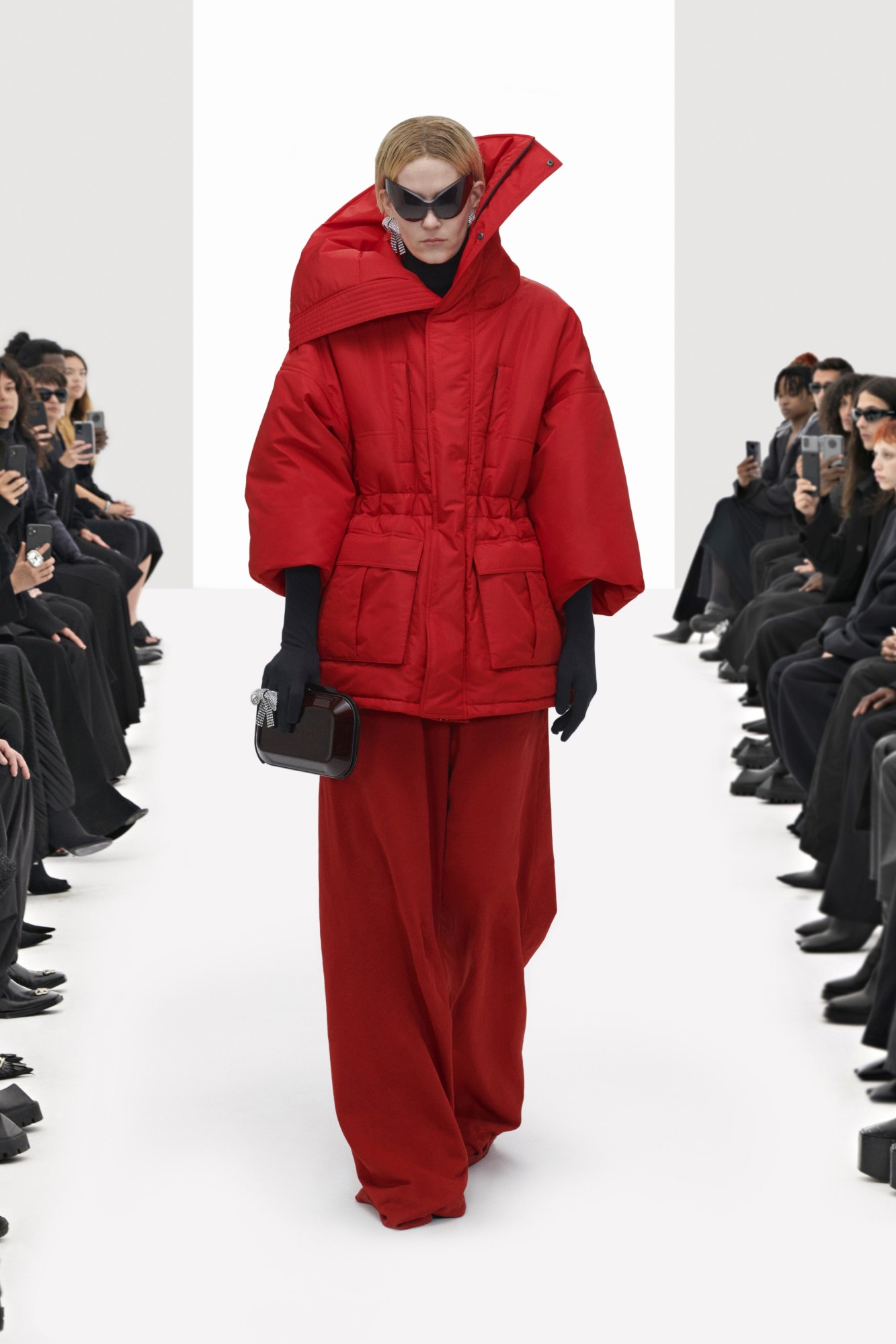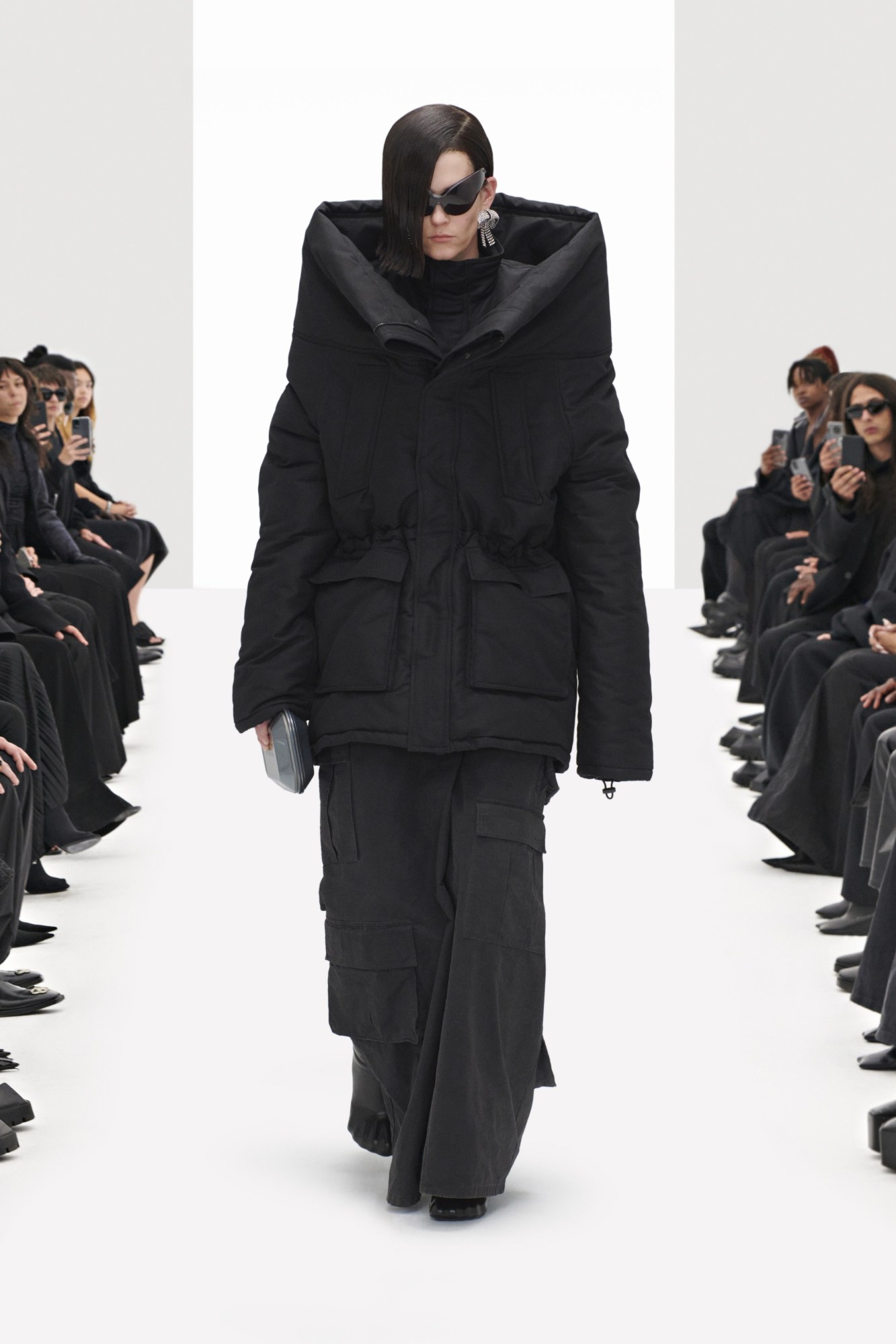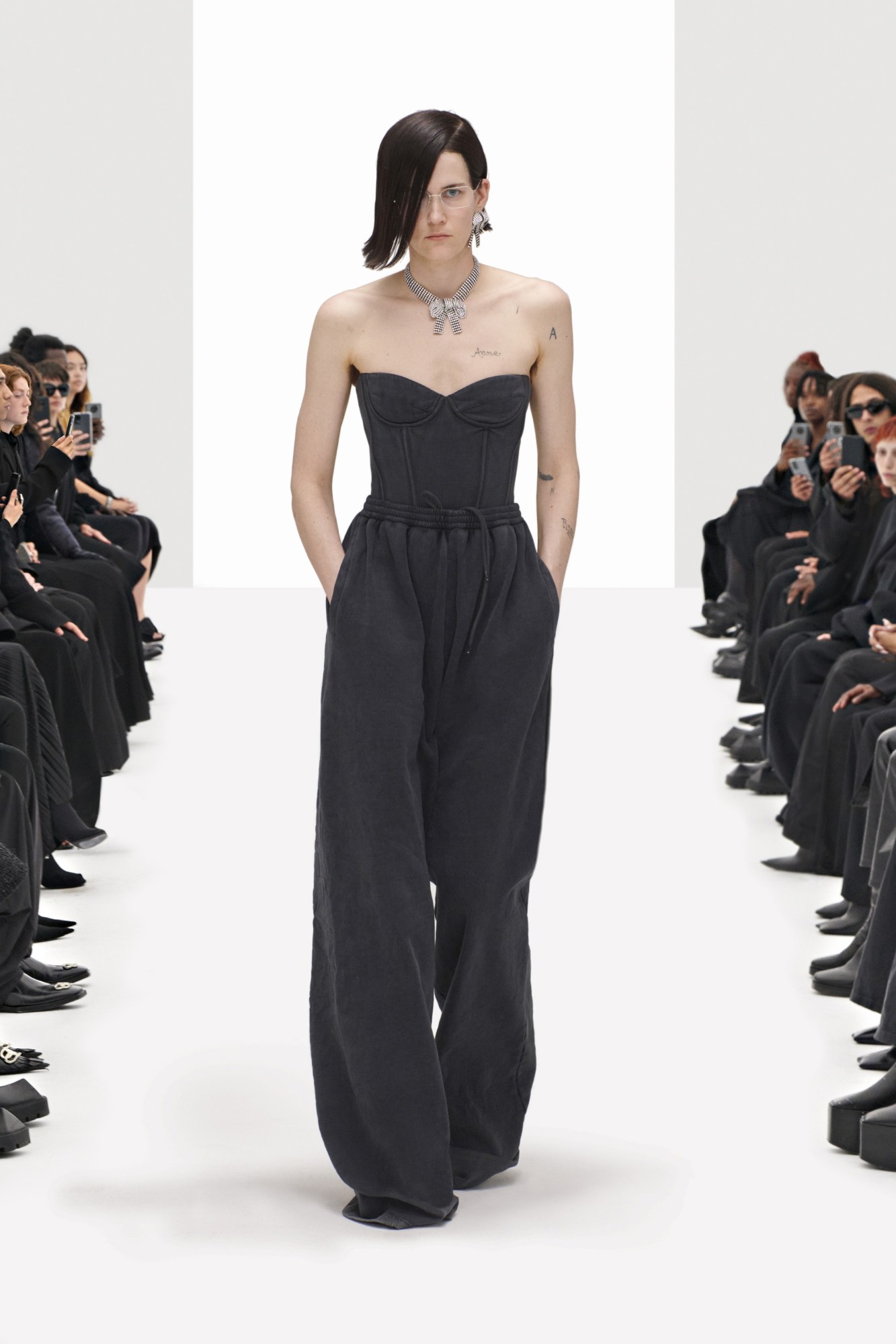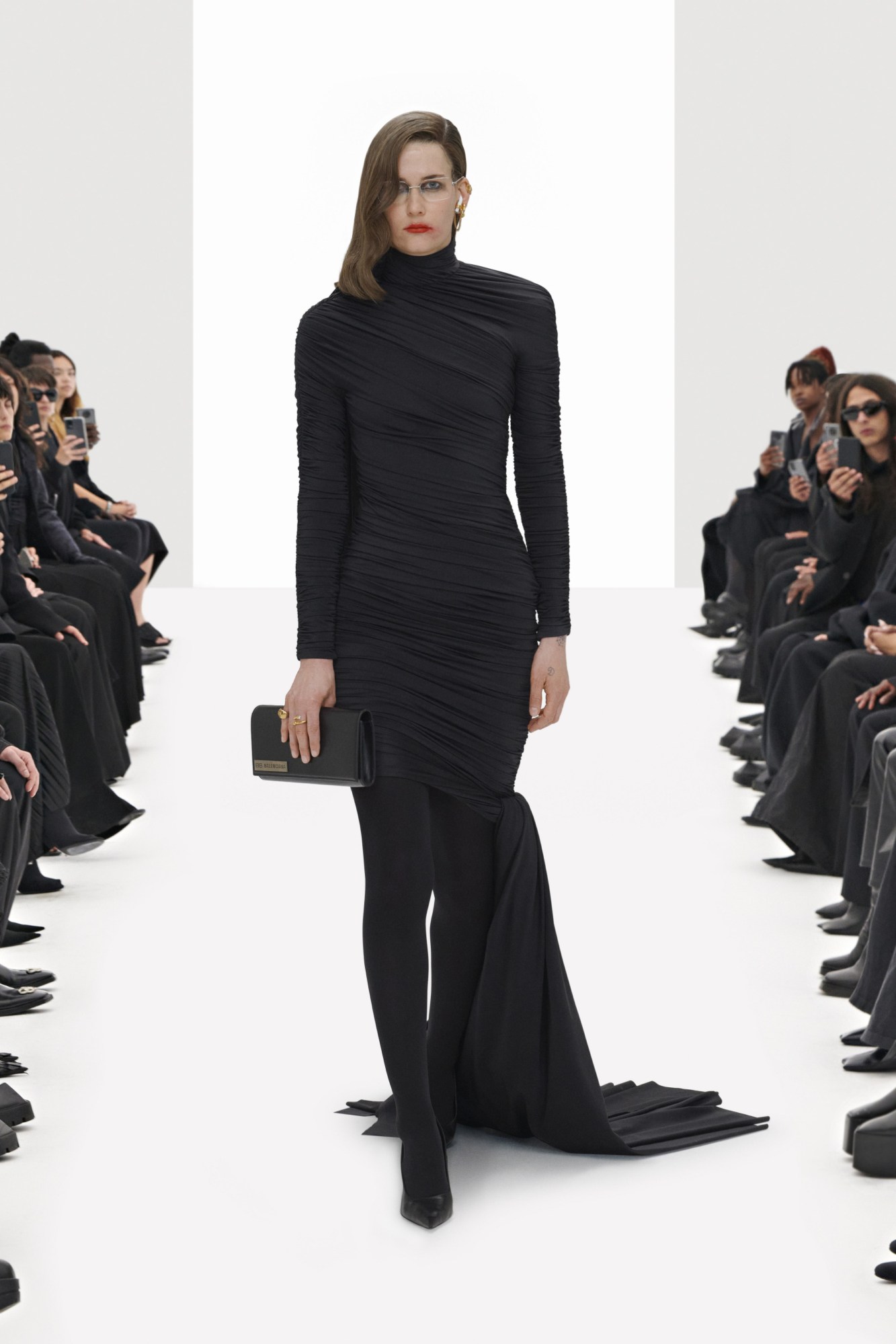Welcome to the weird, wonderful and very virtual world of SS22. By now, you’re probably exhausted by Zooms, over fashion films and desperate for some kind of IRL runway moment. Most fashion designers are equally checked out, too, waiting for things to return to normal (whatever that means). A year on from you-know-what, fashion remains at a crossroads. Shows are still happening digitally, fashion weeks are still on hiatus, but most importantly, our understanding of reality has been completely reframed by technology. If there was ever a turning point for the future of the fashion show, and the industry at large, let it be the deep-fake Balenciaga SS22 show, broadcast on Instagram yesterday. The art world has NFTs, the music industry has its streaming services, TV has Netflix algorithms. Fashion has Demna Gvasalia.
Titled “Clones”, Demna’s show didn’t actually happen, despite the funereal audience in all-black and the minimal catwalk. Instead, it was a CGI production. Eliza Douglas, the artist who has opened or closed every one of Demna’s shows for the house, was the only model, her face photogrammetry-captured and CG-scanned onto deep-fake models wearing the collection (which was indeed real). Luckily, Demna began consulting with tech geniuses before the pandemic, thinking about alternative ways of showing fashion. Last season, it was a dedicated video game. This time, he enlisted video producer Quentin Deronzier to deploy a range of digital post-production processes that take just as much time and craftsmanship as Balenciaga’s hand-stitched leather goods: planar tracking, rotoscoping, machine learning, 3D modeling, photogrammetry, CG grafting. Soundtracked by an AI bot ‘singing’ La Vie En Rose, the result was so hyper-real that it was almost disturbing.
That’s because, beyond the widespread conversations about sequins-as-escapism and cashmere-as-comfort, there’s much more to be said about the way the last year has changed the way that we live, and therefore dress. For starters, we’re all seeing the world through our phones, plugged into the matrix and doomscrolling through images that are increasingly difficult to decipher as real or fake, genuine or counterfeit, fact or fiction. “We see our world through a filter—perfected, polished, conformed, photoshopped,” read Balenciaga’s show notes. “Technology creates alternate realities and identities, a world of digital clones.”
After all, despite the illusion that we’re individuals, often our clothes and behaviours are pretty commonplace. Demna collection opened with a veiled black mourning look (read into that what you will) and closed with a red velvet ball gown with a bouncing crinoline fishtail, inspired by the one Divine wore in Pink Flamingos. In between were typically Gvasalian normcore-couture archetypes. There were bags resembling supermarket baskets and plastic carrier bags. There were more Crocs, as well as plenty of classic cocoon coats, kitsch floral and polka dot prints, patched together and pleated into oversized dresses. Some prints looked like childlike drawings, others were desktop screenshots of Balenciaga products arranged as thumbnails on a computer screen. Plus, plenty of slogan T-shirts: ‘Bébé’ (babe, but also the French way of saying Balenciaga’s double-B logo), The Simpsons decked out in pieces from past seasons, and ‘No Comment’ (because, well, Demna doesn’t do many interviews these days).
And last but not least, perhaps the ultimate sartorial symbol of deep-fake “hacking”, was the latest iteration of the Balencigucci crossover. Gucci’s signature bags and monograms were subtly tweaked to incorporate BBs, instead of GGs. Despite the tension between Alessandro’s eclectic luxe maximalism and Demna’s raw Slavic synthetics, it works. More than that, it challenged fashion’s fiercely-guarded principles of ownership and originality. In fact, it almost felt like a satire of fashion’s obsession with collaborations. Styled with big trench coats, tracksuits and cyber-goth raver pants, here was an instantly recognisable item consensually counterfeited and appropriated from Italian luxe to ‘Gopnik Chic’. Real? Yes. Authentic? Definitely. Therein lies the fashion (and tech) genius of Demna Gvasalia.
